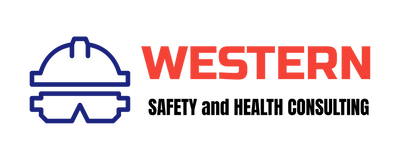|
A comprehensive workplace safety inspection program in BC may include daily inspections of equipment, initial startup inspections, walk-arounds of mobile equipment before use, daily and/or weekly supervisor inspections, and weekly and/or monthly departmental inspections. In addition to regularly scheduled inspections, you need to inspect your workplace after an incident or when you have added a new work process or new equipment.
Conducting an inspection During an inspection, identify unsafe conditions and activities that may cause injury or illness, so you can take corrective measures. Follow these guidelines:
What to focus on There are different ways to approach safety inspections. Looking at the components of your health and safety program will help. For example, you can focus on the most common tasks your workers perform or on specific issues addressed by your program, such as material handling, confined space entry, or workplace violence. You may wish to break up the worksite into specific segments with focused checklists to look at specific hazards and activities in each area. Here are some examples of things to look for:
For more information on conducting a safety inspection. After the inspection Follow these guidelines to address issues and conclude the inspection:
0 Comments
OCCUPATIONAL HEALTH AND SAFETY MANAGEMENT SYSTEMS IN BC An occupational health and safety (OHS) management system encompasses more than just your health and safety program. It includes health and safety policies, systems, standards, and records, and involves incorporating your health and safety activities and program into your other business processes. Having an effective management system improves your ability to continuously identify hazards and control risks in your workplace. COMPONENTS OF AN EFFECTIVE OHS MANAGEMENT SYSTEM These following elements are components of an effective OHS management system. The scope and complexity of the system may vary, depending on the size and hazards of your workplace and the nature of the work performed. Management leadership and commitment Leadership and commitment by senior management (the CEO or most senior management) provides the vision, establishes policy, sets goals, and provides resources to lead and support the implementation of your OHS management programs and system. Safe work procedures and written instructions Safe work procedures and practices ensure that everyone in the organization knows their responsibilities and can perform their duties effectively. There should be safe work procedures on an organizational level, such as how to conduct a risk assessment, as well as on a worker level, such as how to lock out properly. Health and safety training and instruction Everyone in the workplace, from senior management to frontline workers, needs to understand their responsibilities when it comes to implementing and maintaining a healthy and safe workplace. Senior management should understand their role in establishing policies and continually driving the OHS management system and programs. Employers must ensure that workers are trained, qualified, and competent to perform their tasks. Supervisors must provide adequate instruction and oversight to workers so they can safely perform their work. And workers need to work safely, according to how they were trained. Identifying hazards and managing risk Managing the risk in your workplace includes identifying hazards, assessing the risks those hazards present, and controlling the risks to prevent your workers from getting injured. Inspection of premises, equipment, workplaces & work practices Workplace inspections can help you to continually identify hazards and prevent unsafe working conditions from developing. Investigation of incidents Conducting incident investigations helps identify immediate, and root causes of unsafe conditions. It also identifies ways to prevent similar incidents from happening in the future. The Occupational Health and Safety Regulation has specific requirements for incident investigation documentation and reporting that employers are required to meet. Program administration Regularly assessing how well your organization is doing when it comes to meeting its health and safety goals is essential to improving your OHS management system. Maintaining accurate records of your OHS management system activities will provide useful information to help you continually improve. Joint health and safety committee & representatives Joint health and safety committees and health and safety representatives assist the organization by bringing together employers and workers to jointly identify and resolve health and safety issues in your workplace. They also participate in developing and implementing your OHS management system. Occupational health and safety programs Occupational health and safety programs are an essential part of your OHS management system. System audit The COR auditor reviews key aspects of your OHS management system to ensure that its quality and effectiveness meet the expectations of the COR program standards and guidelines. This helps maintain the credibility and value of COR certifications. WHAT AN EFFECTIVE HEALTH AND SAFETY PROGRAM IN BC LOOKS LIKE
An effective program will:
Include sub-programs focused on health and safety issues pertinent to your site. For example, your site may have a specific lockout program, a fall protection program, or a confined space entry program. FORMAL VERSUS LESS FORMAL HEALTH AND SAFETY PROGRAMS IN BC You must have a formal health and safety program if you have either of the following:
Small businesses or employers with fewer than 20 workers need a health and safety program too. These programs can be simpler. We refer to them as "less formal" health and safety programs. See OHS Guideline 3.2 for information about the contents of a less formal health and safety program. If you're not sure if you need a formal or informal program, follow these steps:
What is bullying and harassment in BC?
A worker is bullied and harassed when someone takes an action that he or she knew or reasonably ought to have known would cause that worker to be humiliated or intimidated. When an employer or supervisor takes reasonable action to manage and direct workers, it is not bullying and harassment (see Prevention Policy D3-115-2 for more information). Submitting complaints If you are a worker and you have experienced or observed bullying and harassment in your workplace, you must report it to your employer. If your employer has not taken reasonable steps to address the incident, you can call the Prevention Information Line to contact an officer to discuss the incident prior to submitting a complaint to WorkSafeBC. There is a difference between bullying and harassment and other types of incidents that can happen in the work environment. The following behaviours may not be bullying and harassment if they are approached in an appropriate manner:
Procedures for handling complaints Employers must establish procedures stating how they will deal with bullying and harassment incidents and complaints in the workplace. Procedures must: ensure a reasonable response, aim to fully address the incident, and ensure future bullying and harassment is prevented or minimized. Procedures must address the following:
In addition to establishing procedures, employers are responsible for ensuring they are followed. Workers are expected to cooperate with investigators and provide any details of acts of bullying or harassment they have experienced or witnessed. |
Details
safety blog
AuthorGG Health and Safety Consulting BC Archives
March 2021
Categories |
- Home
- Safety Manuals
-
TEMPLATES
- Construction Safety Program Template BC
- General Industry Safety Program Template BC
- Human Resources Policies and Procedures Template BC
- Isnetworld Safety Manual Template BC
- Site Specific Safety Plan Template
- Food Safety Plan Template BC
- Cleaning Service Safety Program Template BC
- Silica Exposure Control Plan Template BC
- Lead Exposure Control Plan Template BC
- Asbestos Exposure Control Plan Template BC
-
ONLINE SAFETY TRAINING
- Online Joint Health and Safety Committee Training BC
- Online Bullying and Harassment Training
- Online Traffic Control (Low Risk) Training
- Online Asbestos Awareness Training
- Online Aerial Lift Operator Training
- Online Scissor Lift Operator Training
- Online Forklift Operator Training
- Online Confined Space Training
- Online Fall Protection Training
- Online Fire Extinguisher Training
- Online Supervisor Due Diligence Training
- Online Ladder Safety Training
- Online WHMIS 2015 Training
- Online TDG Road Training
- Online Lock Out Tag Out Training
- Online Bloodborne Pathogens Training
- Online Sharps Disposal Training
- Online Incident Investigations Training
- Online Workplace Inspections Training
- Online Workplace Violence Training
- Online Sexual Harassment Training
-
Classroom Safety Training
- Joint Health and Safety Committee Training BC
- Bullying and Harassment Training BC
- Confined Space Entry Training
- Fall Protection Training
- Man-lift Certification (Aerial Work Platform Training)
- Scissor-lift Certification (Aerial Work Platform Training)
- Fork-lift Certification (Lift Truck Certification)
- Asbestos Awareness Training
- Supervisor Responsibilities and Due Diligence Training
- Lock Out Tag Out Training
- WHMIS 2015 (GHS) Training
- Ladder Safety Training
- Safe Sharps Disposal Training
- Accident Incident Investigation Training
- Workplace Safety Inspections Training
- Classroom Safety Training BC
- Contact Us
OCCUPATIONAL HEALTH AND SAFETY CONSULTING BC, SAFETY PROGRAMS BC, SAFETY MANUALS BC, CLASSROOM SAFETY TRAINING BC & ONLINE SAFETY TRAINING BC IN:
BRITISH COLUMBIA, BC, VANCOUVER, SURREY, BURNABY, RICHMOND, NEW WESTMINSTER, LANGLEY, DELTA, MAPLE RIDGE, COQUITLAM, PORT MOODY, PITT MEADOWS, WHITE ROCK, MISSION, CHILLIWACK, ABBOTSFORD, WHISTLER, HOPE, SQUAMISH, SUNSHINE COAST, KELOWNA, PRINCE GEORGE, KAMLOOPS, VICTORIA, LANGFORD, NANAIMO, VANCOUVER ISLAND
Copyright © 2024 GG Health & Safety Consulting Services. All Rights Reserved. Vancouver BC, Lower Mainland & Victoria BC, Vancouver Island, BC, Canada

 RSS Feed
RSS Feed


